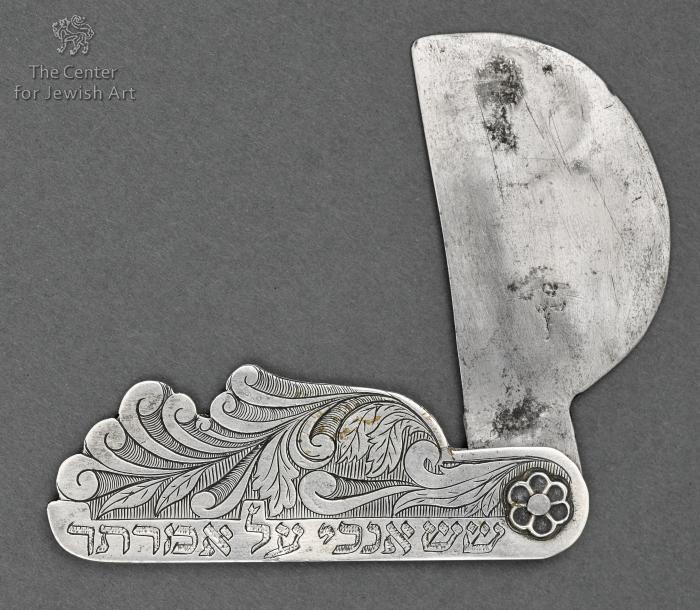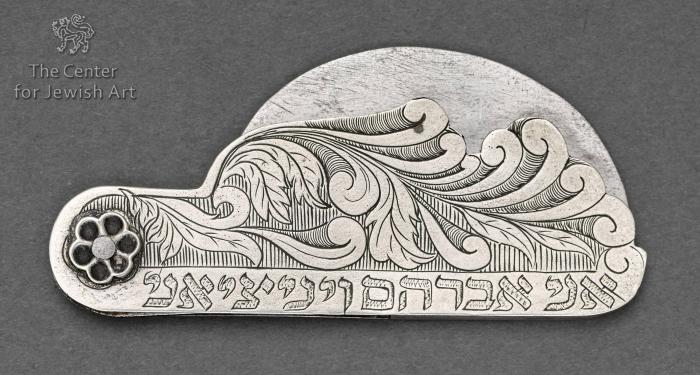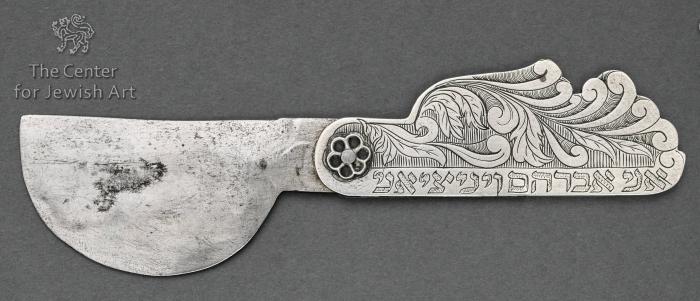Obj. ID: 36245 Circumcision knife, Italy, circa 1800

sub-set tree:
The following description was prepared by William Gross:
Circumcision for the Jewish male is commanded by the Torah to be performed eight days after the birth of the male child. Surrounding this custom are many different types of objects for use on that day.
The use of a knife in the circumcision ceremony is to cleanly cut off the foreskin of the male sexual organ. While in most of the world, the knife is in the regular straight form, the traditional circumcision knife has a unique form in Italy and some parts of the Ottoman Empire. It is very similar to an Oyster knife but often carries a Hebrew inscription, as does this example, which shows a Biblical quotation from the Psalms and the name of the mohel owner.
Inscription: Side 1: I am Avraham Veneziani Side 2: I rejoice at Thy Word (Psalms 119:162)
For similar object see CJA object 2615.







